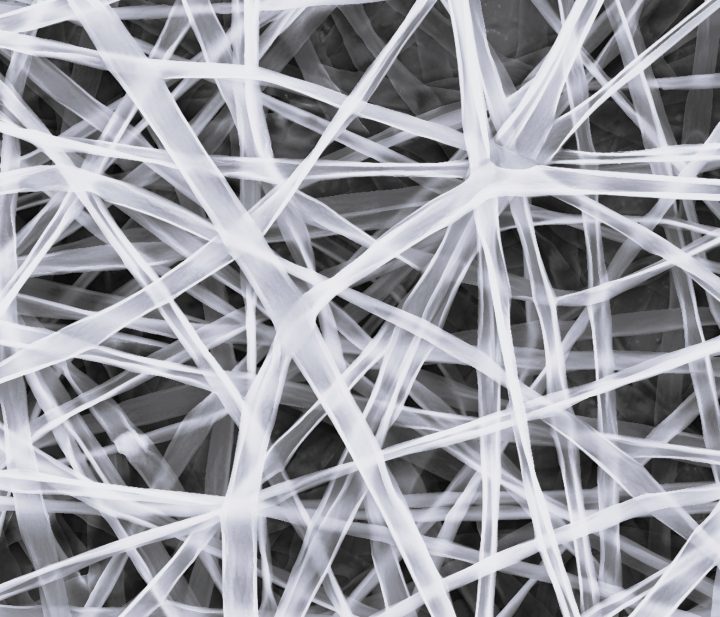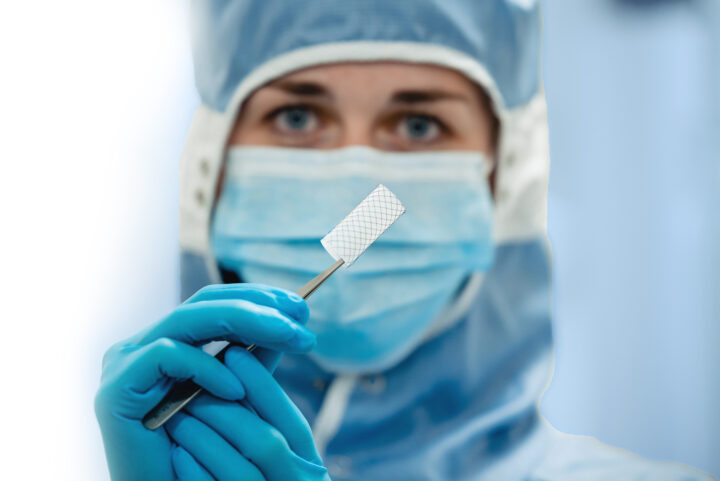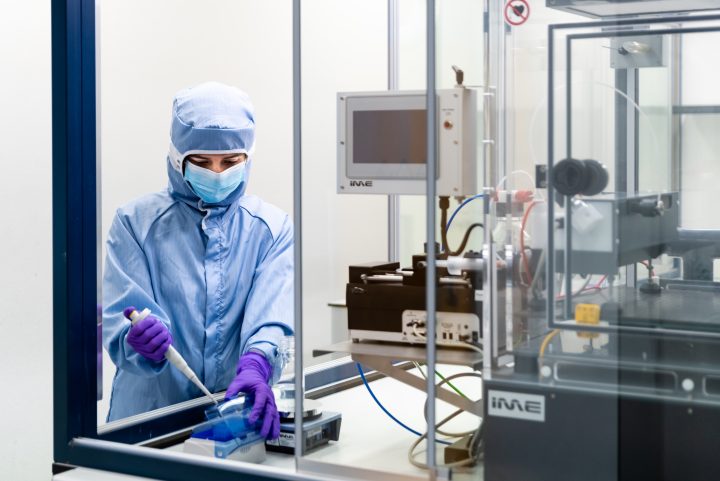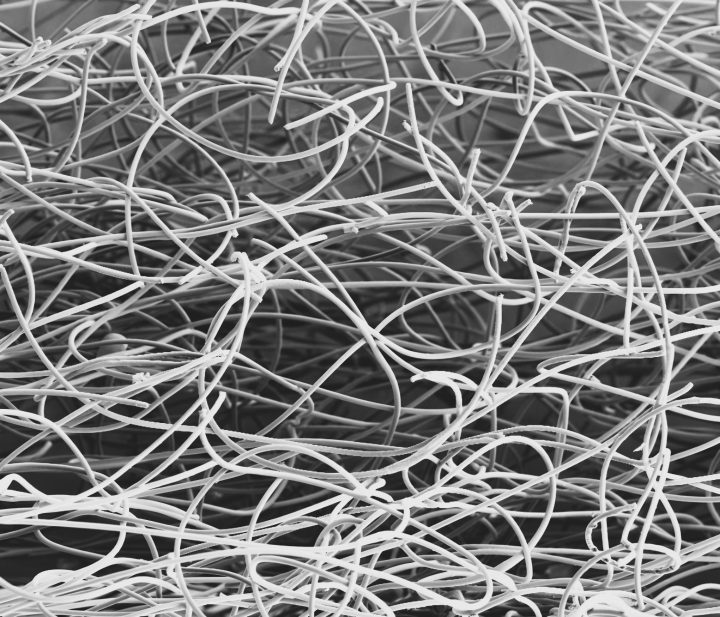
What is Electrospinning?
Understand the core process, key parameters, and material science foundational to electrospinning

Electrospinning has evolved from a niche academic technique into a transformative manufacturing process for the medical device industry. This white paper provides a clear, evidence-based overview of the entire landscape and serves as a comprehensive guide to solving electrospinning’s biggest challenges. We will explore the fundamental process, review its most promising medical applications, dissect the persistent challenges that hinder scalability, and detail how VIVOLTA’s integrated technology platform converts electrospinning into a predictable, GMP-ready solution.

Electrospinning is an additive manufacturing process that uses a high-voltage electric field to draw ultrafine nano- and micro-fibers from a polymer solution or melt. As a charged jet of polymer travels through the air, the solvent rapidly evaporates, leaving solid fibers that collect as a nonwoven, porous mat. This process creates nano- and micro-fiber materials with an exceptionally high surface area-to-volume ratio, making them ideal for applications that mimic biological structures.

The true value of electrospinning lies in its ability to create nanofiber architectures that closely resemble the body’s native extracellular matrix (ECM). This biomimicry is critical for guiding tissue restoration, supporting cell attachment, and enabling advanced drug delivery. From resorbable hernia meshes that promote natural tissue integration to heart valve scaffolds that encourage the body to build a new, living valve, electrospun materials are at the forefront of regenerative medicine


Understand the core process, key parameters, and material science foundational to electrospinning

Discover electrospinning’s use in cardiovascular, orthopedics, wound healing, and many more clinical segments with this in-depth review of the most important peer-reviewed literature.

Learn why scaling electrospinning from the lab to commercial production is notoriously difficult and tangible, proven strategies on how to achieve it.

Discover our integrated electrospinning solutions for process control and repeatability and how we’re solving electrospinning’s biggest challenges in meaningful ways.

Explore the world’s first fully automated, high-throughput medical electrospinning production system.
The foundational principles were observed as early as 1887, but the technology gained significant momentum in the 1990s. Modern advances in automation, climate control, and in-line monitoring are what make it a viable, industrial-scale manufacturing process today.
Fiber diameters typically range from the nanometer to micron scale. The final product can be an ultrathin membrane just a few microns thick or a complex 3D scaffold several millimeters thick, though building thicker constructs presents unique challenges.
A wide range of natural and synthetic polymers can be used, including bioresorbable materials like PCL, PLA, and collagen, as well as durable, biostable polymers like polyurethane and polyester. Colloids, bioactive particles, and small molecule APIs can also be incorporated into electrospun fibers. The choice depends on the required mechanical properties, degradation profile, and biological response.
Please contact us at bd@vivolta.com to learn more.


"*" indicates required fields